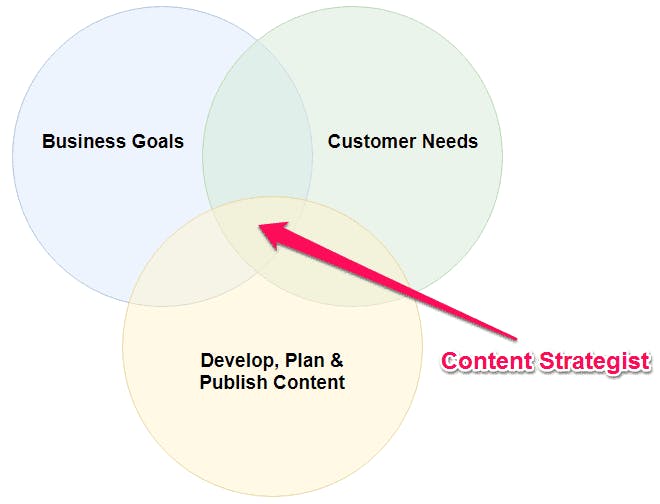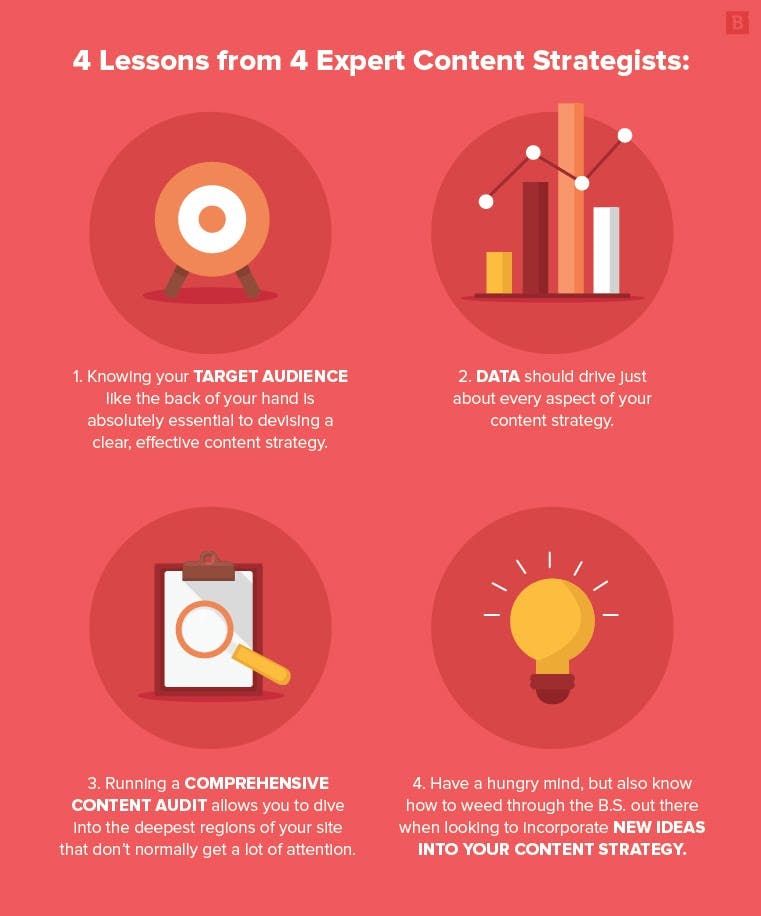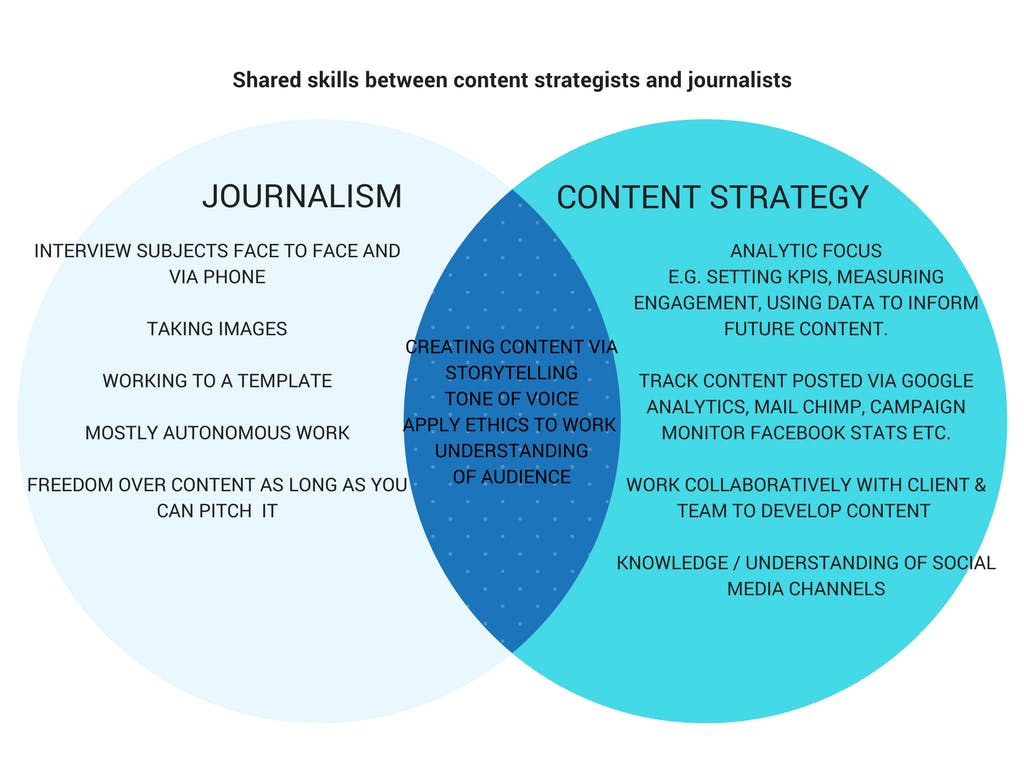Content strategist: role, responsibilities and skills
Oct 4th, 2021

Contents
What is a content strategist?
Content strategist responsibilities
Skillset and background of a content strategist
When do you need a content strategist?
Content marketing is gaining vast grounds as a means of improving your company’s online visibility and a way to build stronger relationships with clients. Content is a crucial aspect of modern marketing. Nowadays, companies have a brilliant opportunity to attract more customers by having a blog with helpful customer-focused content. Moreover, blogging regularly can significantly raise your traffic.
Every long-term goal requires a strategy. Content creation is no exception. A content strategist is a dedicated person who will fully take care of the tasks related to content creation, promotion, and distribution to fulfill your company's goals.
What is a content strategist?
Content strategist is an inbound marketing specialist who creates, develops, and executes a brand’s content strategy using a wide range of skills, including content planning, production and distribution, analysis, and search engine optimization best practices. In addition, a content strategist is responsible for finding the brand’s voice, determining content requirements, selecting appropriate channels, and analyzing client needs.

Content strategist’s job is critical for building a unified content strategy taking into account the buyer’s journey and user personas development. A content strategist aims to drive new customers by developing the right content, increasing their loyalty, and improving retention, resulting in higher profitability for the company. Throughout the project life cycle, the strategy expert monitors the target audience’s needs, conducts the content analysis of the materials on websites and social media, and identifies the existing content gaps. Thus, the content strategist is in charge of generating, managing, and delivering valuable content.
Although one person may carry out the content strategist’s responsibilities, Content Marketing Institute has proposed the idea of front- and back-end content strategists.
Front-end vs back-end content strategists
Front-end and back-end content strategist roles require different skills, responsibilities, and mindsets. If your company strives for a scalable approach to content that will work for the customers and leverage automation, you might need to coordinate the efforts of both front-end and back-end strategy experts.
Front-end content strategists usually deal with the customer experience and content planning. They define the target audiences, identify their needs and make recommendations for content creation. Front-end strategists make sure that the content is consistent with the business objectives and the value for customers. The specialists search for ways to improve the materials and better handle the content team’s activities in the future.
Back-end content strategists are responsible for scalability and technology. The experts provide recommendations on managing the content in the most efficient way possible by using technology and software capabilities. Besides, back-end content specialists define the best methods to organize the content and help make its storage, automated selection, and distribution easier for the authors. This type of content strategist also needs to avoid repetition of the materials distributed through different channels. The other responsibilities of the back-end content strategists include structuring the content to make it adjustable to address customer requirements and take advantage of it over time.
Although this is a neat thought exercise, we do not necessarily consider that businesses need to split this role in two.
Content strategist responsibilities
Content strategist responsibilities vary depending on the company. However, some day-to-day tasks are common for this role. We will describe the content strategist’s responsibilities aimed at delivering the right message to the customers and achieving the business goals.
Brand discovery
The specialists working in agencies usually have to create content strategies for various clients from different organizations. Brand discovery is the first step towards implementing the objectives set by the new customers. The content strategist should understand the requirements, determine the target audience, learn about products and services and analyze the competitors.
In brand discovery interviews, the experts should find the answers to the three important questions:
- What does the brand think about itself?
- What do their customers think about the brand?
- Who are the competitors?
In addition, the specialist needs to review the core elements of the brand strategy, including purpose, mission and values, brand messaging, and visual identity. Finally, the expert should integrate the components into a content strategy to tell the powerful brand story.
When the content strategist understands the company’s goals and its positioning, it would be easier for them to identify messaging gaps in the industry and fill them. It will result in more effective communication and stronger connections with the target audience.
Content audit
The other content strategist’s responsibility is to examine the performance of the existing content. The analysis will indicate the content gaps and areas for improvement. The goals of the content audit are to enhance SEO results, increase customer engagement and conversion rate.
The content audit usually starts with an overview of all the content indexed by search engines on the company’s own website and competitor’s websites. Then the expert evaluates the content according to several metrics taking into account the business objectives, industry standards, and competitive criteria. Content strategist collects the URLs of the pages he will analyze and sorts them according to different characteristics, such as content type and format, buyer’s journey stage, publication date, author, etc.
The next step of the content audit is to collect data on the content performance using analytic tools, such as Google Analytics, ContentWRX Audit, Content Square, and others. Once the data is collected, the expert interprets the results of the analysis. Next, the content strategist prepares a content strategy for the company’s growth and an action plan for each publication. The actions might include adding new articles, reusing or rewriting existing pieces of content, deleting underperforming materials, adding relevant information, videos or images, updating CTA, optimizing metadata, and internal linking. Finally, the specialist needs to adjust the content strategy considering the audit results.

Competitor analysis
Competitor analysis is one of the most crucial stages in building the content strategy. It helps find content gaps and understand what publications are needed to meet the customers’ requirements. Moreover, the content-focused competitor analysis will be helpful for your brand if you are planning the website launch or redesign, developing a digital product, or introducing new services.
During the analysis content strategist usually finds the competitors’ unique value propositions, evaluates types of content they produce, considers content hubs and distribution channels. Plus, the tone of voice used by the competitors tells a lot about their target audience, and the expert can use some valuable insights when addressing your customers.
The content strategist analyzes the quality and SEO structure of the content and evaluates their social media marketing efforts, topics, amount of content, and the frequency of publications. The keyword research will help understand the keywords the competitors rank for. Then the specialist can determine the keywords to focus on which are not targeted by the other companies. Finally, the ideas and tactics learned from the competitors can be used to improve the brand’s social media presence and adapt its strategies to your company’s needs.
Editorial planning
Once the content strategist has made the list of keywords and content gaps, the expert starts generating the content ideas. Then the professional creates the editorial calendar or a schedule of the publications to write and distribute via various channels. So, the editorial calendar enables the company to implement the content strategy and stick to the timetable when publishing the materials.
Content strategist builds the content publication timeline, including the topic of each piece of the content, content type, goal, author, and deadline. The editorial calendar is more than a schedule. It considers the buyer personas, the channels, the parties responsible for each step, and the long-term objectives. In addition, the calendar should include the call to action considering the content’s goals.
Editorial planning provides many benefits for the company. It helps get the team on the same page, define the greatest priorities and start with them. With an editorial calendar, the content strategist can schedule publications according to the holidays and industry events. It is effective in justifying the company’s value, relevance and funding to the stakeholders.

Content creation management
The content strategist is not necessarily involved in content creation. For example, some companies have a team of writers, publishers, and editors. The other organizations outsource such services to copywriting agencies or freelancers. However, in small companies, content strategists often perform tasks related to writing and editing articles and publishing the content on the website and any other platforms used. In larger organizations, the content strategist collaborates with the people who create content and manages their work.
The content strategist is also in charge of measuring the content’s performance according to the metrics and tools we described earlier in the content audit section. The specific metrics for tracking the performance depending on the business objectives, campaign, and other factors. The specialist can evaluate how much organic traffic the piece of the content drives to the website or the number of subscriptions it generates.
If the content shows poor results, the professional can make edits to improve the publication’s performance. Conversely, when the publication ranks high in SERPs, the content strategist can analyze it and apply some best practices to create better content pieces in the future.
Skillset and background of a content strategist
The successful content strategist should have deep expertise in journalism and vast experience in generating and editing digital content on social networks and multimedia platforms. The required content strategist’s hard skills include writing for different target audiences and creating various types of content, such as marketing, technical and instructional publications.
A background in editing and digital marketing is advantageous for the content strategist. Suppose the specialist is proficient in social media marketing, content marketing, email marketing, SEO and pay-per-click advertising. That would be a great advantage. As well, the content marketer should have experience with marketing automation solutions, such as Hubspot and Marketo, and understand tools like Google Analytics.
The content strategist is responsible for developing a vision for the future, so they should be a problem-solver with project management expertise. To put a vision into action, a content strategist should be able to organize a team, understand the objectives and requirements of different roles within the group and communicate the vision. Furthermore, understanding user experience, design thinking, and proficiency in media relations would all be valuable in achieving success. Let us describe the most necessary skills in more detail.

Audience discovery. The content strategist should be skilled in identifying and developing customer personas for the target audience. The ability to map audience personas to stages of awareness in the marketing funnel is also a critical skill for the professional. In addition, the specialist should understand how to maintain brand consistency.
Strong writing skills. Content creation is the most crucial aspect of digital marketing. Even if the content strategist manages the team of copywriters instead of writing the content himself, the ability to plan, design, and edit the content will improve the content creation efficiency. So, the specialist should be competent in creating the content for each stage of the buyer’s journey, generating ideas, and seeing a bigger picture when preparing a content strategy.
Content presentation and delivery skills. The strategist should determine how the content would be presented to the audience. Depending on the purpose and business objectives, the publications can take many forms, such as e-books, blog posts, guides, etc. The specialist’s task is to choose the most suitable format and best distribution channels to reach the customers.
Campaign experience. The specialist should have experience in creating, delivering, and implementing marketing campaigns, as well as analyzing metrics. The content strategist should be able to set content budgets, monitor and update the content over time and apply social media to promote publications. The ability to set content strategy objectives and choose the appropriate keywords would be a huge bonus.
Organizational skills. The duties of a content strategist include collaboration with the marketing team members, stakeholders, and other departments, so managerial skills will be instrumental in this matter. As well, content strategists often meet with different teams to discuss the projects, work with designers, marketing executives, and UX specialists. So, multitasking, communication, and planning skills will come in handy.
When do you need a content strategist?
The content strategist helps the company focus on the big-picture vision and set goals instead of being distracted by day-to-day tasks. Content marketing requires a long-term strategy, so it needs a lot of time and effort to see significant results. The content expert shifts the attention back to the overall plan. The specialist ensures that all elements of online presence, such as articles, images, and videos work together to provide a consistent and visually appealing digital experience. Nevertheless, you can hire a generalist marketing strategist rather than a more narrow-focused content strategist if you want to review your brand vision and strategy.
The content strategy is usually based on the thorough research conducted by the specialist. The study is useful for identifying new content creation opportunities by following trends and discovering new story ideas. It also helps to find the topics that are important for the target audience. Thus, the content strategy contributes to brand consistency and also brings new ideas. However, your organization might need a marketing consultant rather than a content strategist if you want to create a couple of articles or run some simple advertising campaigns.
At the same time, if you want to start an outstanding blog or take your current blogging activities to the next level, you will need a content strategist. This person helps organizations implement the goals. This is a visionary who can look at the situation from another perspective and provide valuable content that satisfies the audience’s needs.
